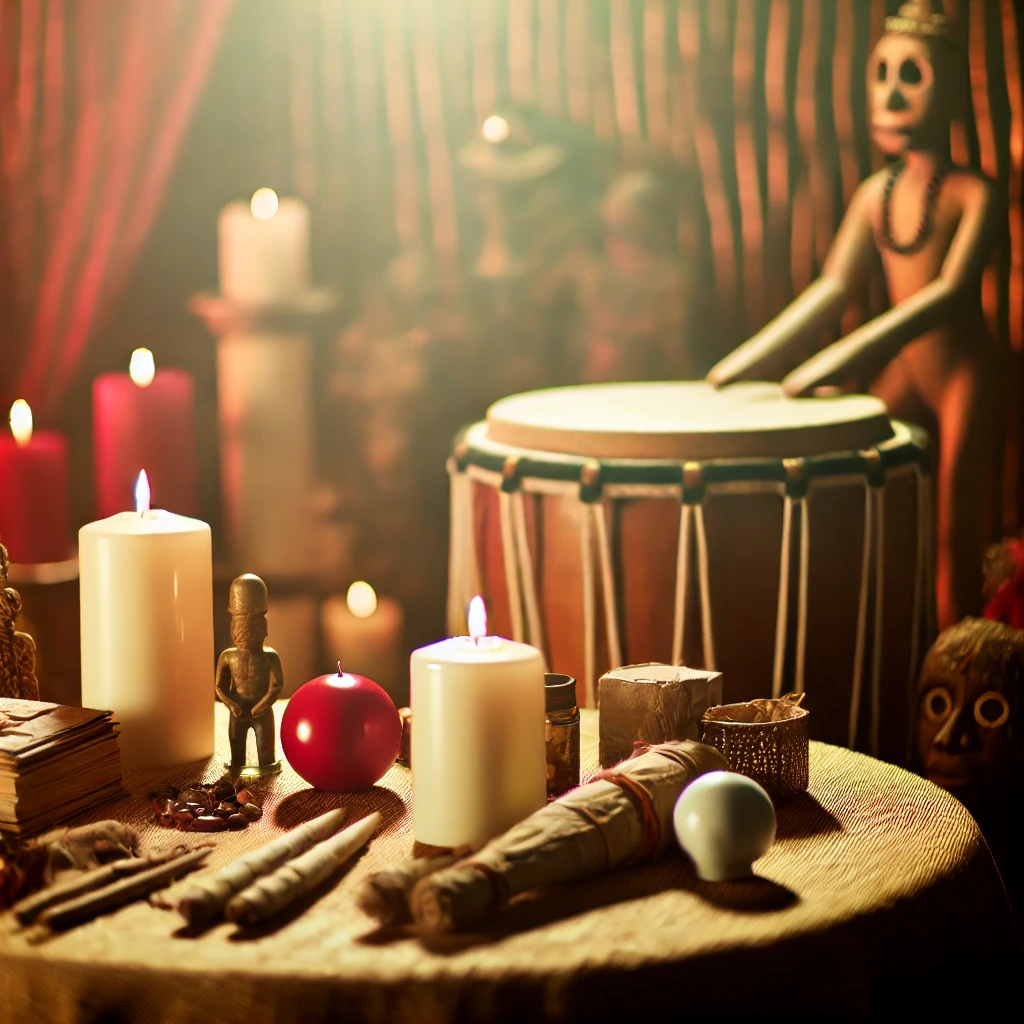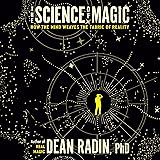Voodoo rituals have long been a subject of fascination, mystery, and sometimes fear. Popular culture often portrays these ceremonies as sinister events filled with dark magic, curses, and secretive gatherings. But what really happens during a Voodoo ritual? Are these ceremonies as dangerous as they are depicted in movies, or is there a deeper spiritual meaning behind them?
In this article, we’ll uncover the truth about Voodoo rituals, exploring their purpose, the steps involved, and the spiritual significance they hold for practitioners. By the end, you’ll have a clearer understanding of what really happens during a Voodoo ceremony and why these rituals are so important to those who practice Voodoo.
MAYJAM 100ML/3.38FL.OZ Coconut & Vanilla Fragrance Oils with Glass Dropper, Essential Oils for Diffusers for Home, Long Lasting Scented Oils for Diffusers Soap Candle Making
$6.99 (as of December 24, 2025 14:34 GMT +00:00 - More infoProduct prices and availability are accurate as of the date/time indicated and are subject to change. Any price and availability information displayed on [relevant Amazon Site(s), as applicable] at the time of purchase will apply to the purchase of this product.)What Is a Voodoo Ritual?
At its core, a Voodoo ritual is a sacred ceremony that connects the physical world with the spiritual world. These rituals are performed to honor and communicate with the lwa (spirits) and to seek their guidance, protection, and blessings. Voodoo practitioners, known as Vodouisants, believe that through rituals, they can receive spiritual support for healing, prosperity, love, protection, and much more.
Fact:
Voodoo rituals are not about casting curses or invoking evil spirits. They are spiritual ceremonies that aim to create harmony between the human and spiritual realms.
Rituals vary in complexity depending on their purpose, but they generally involve offerings, drumming, dancing, singing, prayers, and spiritual possession. The goal is to invite the presence of the spirits and ask for their help in addressing specific issues, whether they be personal, communal, or environmental.
The Purpose of Voodoo Rituals
Voodoo rituals serve many purposes, all of which revolve around maintaining harmony between the physical and spiritual worlds. Some of the most common reasons for performing a Voodoo ceremony include:
- Healing: To ask the spirits for physical or emotional healing.
- Protection: To seek spiritual protection from harm or negative energies.
- Guidance: To ask for guidance on important life decisions or challenges.
- Prosperity: To attract wealth, success, or opportunities.
- Celebration: To honor specific lwa, ancestors, or significant events.
Fact:
The primary purpose of a Voodoo ritual is to connect with the lwa and seek their blessings. These rituals are meant to bring positive outcomes, such as healing, protection, and prosperity.
What Happens During a Voodoo Ritual?
Despite the sensationalized depictions of Voodoo rituals in movies, these ceremonies are often joyful, communal, and filled with deep spiritual significance. Here is a closer look at what actually happens during a typical Voodoo ritual:
1. Preparation of the Sacred Space
The first step in any Voodoo ritual is the preparation of the sacred space. This space, often called an ounfò or temple, is where the ceremony will take place. The space is cleansed and purified with offerings, candles, herbs, and other sacred items to ensure that it is welcoming to the spirits.
- Altar Setup: A central altar is arranged with offerings for the lwa. These offerings may include food, drinks (like rum or coffee), flowers, candles, tobacco, and other items that the specific lwa being honored prefer.
- Symbols and Colors: Each lwa has specific symbols and colors associated with them, and these are incorporated into the decorations and offerings at the altar.
Fact:
Preparing the sacred space is an essential part of the ritual, ensuring that the lwa feel welcome and honored. The altar is the focal point where offerings are made and prayers are directed.
2. Drumming, Singing, and Dancing
Once the sacred space is ready, the ritual begins with drumming, singing, and dancing. Music is a key component of Voodoo ceremonies, as it helps to call the spirits and invite their presence. Each lwa has its own drum rhythms and songs, and these are played to attract the attention of the specific spirit being invoked.
- Drumming: The drummers play rhythms that correspond to the lwa being honored. These rhythms are passed down through generations and have a profound spiritual significance.
- Dancing: Participants dance in circular motions, often in rhythm with the drums. The dancing is not only a way to celebrate the spirits but also a way to build the spiritual energy needed for the ritual.
- Singing: Songs are sung in honor of the lwa, often in Creole or other languages specific to the region. The songs contain prayers, praises, and invocations, asking the spirits to join the ceremony.
Fact:
Music, especially drumming and dancing, is vital to Voodoo rituals. It helps raise spiritual energy and create an atmosphere where the spirits feel invited and honored.
You Are the Placebo: Making Your Mind Matter
$11.08 (as of December 25, 2025 18:12 GMT +00:00 - More infoProduct prices and availability are accurate as of the date/time indicated and are subject to change. Any price and availability information displayed on [relevant Amazon Site(s), as applicable] at the time of purchase will apply to the purchase of this product.)3. Invocation of the Lwa
The central part of the ritual involves the invocation of the lwa. The houngan (male priest) or mambo (female priestess) leads the invocation, calling upon the lwa to join the ceremony and offer their blessings. The invocation is done through prayers, songs, and offerings placed on the altar.
- Offerings: Specific offerings are made to the lwa, such as food, alcohol, or symbolic items like veves (sacred drawings that represent the lwa).
- Prayers and Chants: The houngan or mambo recites prayers or chants to invite the lwa to join the ceremony and help those present.
Once the lwa are called, participants may feel the presence of the spirits, and some may experience spiritual possession.
Fact:
Invoking the lwa is a sacred act that allows practitioners to communicate with the spirits. Each lwa has its own unique preferences, and offerings are made to show respect and honor their presence.
4. Spiritual Possession
One of the most important aspects of a Voodoo ritual is the phenomenon of possession. During the ritual, a lwa may choose to “ride” or possess a participant, temporarily inhabiting their body to deliver messages, offer blessings, or provide guidance.
- What Happens During Possession: When a lwa possesses an individual, that person takes on the characteristics of the spirit. For example, if Papa Legba, the gatekeeper of the spirit world, possesses someone, they may act as an elder and speak in a wise or cryptic manner. The person may also perform gestures or dances associated with that particular lwa.
- Why Possession Happens: Possession is seen as a blessing, as it allows the community to communicate directly with the lwa. The spirit may offer advice, blessings, or healing to those in attendance.
Fact:
Spiritual possession in Voodoo is not a terrifying or chaotic event, as depicted in movies. It is a sacred and respected phenomenon where the lwa temporarily inhabit a person to communicate with the community.
5. Healing, Blessings, and Guidance
Once the lwa are present, the ceremony turns to the specific requests of the participants. This can include healing rituals, personal blessings, or spiritual guidance.
- Healing Rituals: The lwa may offer spiritual healing for physical or emotional ailments. This could involve spiritual baths, the application of sacred herbs, or other healing methods.
- Blessings: Participants may ask the lwa for protection, success, or blessings in areas such as love, work, or family life.
- Guidance: The lwa may offer advice or guidance on personal challenges or decisions. This guidance is often delivered through the individual who is possessed by the lwa.
Fact:
Voodoo rituals are deeply personal and often focus on healing and guidance. Participants believe that by communicating with the spirits, they can receive the spiritual help they need to overcome challenges and improve their lives.
6. Closing the Ceremony
Once the requests have been made and the blessings have been given, the ceremony begins to wind down. The houngan or mambo thanks the lwa for their presence and offers final prayers of gratitude. The spirits are then “sent away,” meaning that they are respectfully asked to return to the spiritual realm.
- Final Offerings: Participants may make additional offerings to thank the lwa for their blessings.
- Closing Prayers: Prayers are recited to close the spiritual connection and return the space to its ordinary state.
Fact:
Closing the ceremony with respect and gratitude is an important part of Voodoo rituals, as it ensures that the spiritual relationship between the community and the lwa remains strong.
The Misconceptions About Voodoo Rituals
There are many misconceptions about what happens during a Voodoo ritual, largely due to sensationalized portrayals in films and TV shows. Here are some common myths and the truth behind them:
- Myth: Voodoo rituals are about casting curses or invoking dark forces.
Truth: The vast majority of Voodoo rituals focus on healing, protection, and asking for blessings. Harmful magic is not the primary focus of Voodoo ceremonies. - Myth: Voodoo rituals involve violent sacrifices or dangerous practices.
Truth: While animal sacrifices are a part of some Voodoo rituals, they are performed with deep respect and are usually followed by communal meals. The rituals are not violent or dangerous in the way they are often depicted. - Myth: Spiritual possession in Voodoo is chaotic and frightening.
Truth: In reality, possession is seen as a sacred and positive event, where the lwa use an individual as a vessel to deliver blessings and guidance.
Fact:
Voodoo rituals are not the dark and dangerous events often portrayed in the media. They are spiritual ceremonies focused on healing, protection, and maintaining harmony between the physical and spiritual worlds.
The Science of Magic: How the Mind Weaves the Fabric of Reality
$17.33 (as of December 25, 2025 18:12 GMT +00:00 - More infoProduct prices and availability are accurate as of the date/time indicated and are subject to change. Any price and availability information displayed on [relevant Amazon Site(s), as applicable] at the time of purchase will apply to the purchase of this product.)Voodoo Rituals Are About Spiritual Connection and Healing
The truth about Voodoo rituals is far from the sensationalized depictions seen in movies. These ceremonies are deeply spiritual, focusing on creating harmony between the physical and spiritual realms. Through music, offerings, prayers, and the presence of the lwa, participants seek healing, protection, and guidance from the spirits.
By understanding what really happens during a Voodoo ceremony, we can dispel the myths and misconceptions that have long surrounded this sacred tradition.
Related Articles
- Voodoo Priests and Priestesses: Guardians of Tradition or Agents of Magic?
- Voodoo as a Force for Good: Misunderstood Spirituality
- Do Voodoo Curses Exist? What You Should Know
- The Influence of African Voodoo on Modern Practices
- Is Voodoo Legal? Understanding the Rights of Voodoo Practitioners
More from This Category
- The Truth About Voodoo Rituals: What Really Happens During a Ceremony?
- How Voodoo Heals: The Spiritual and Physical Aspects of Voodoo Healing
- Voodoo Spells: What They Really Mean and How They Work
- The Role of Spirits in Voodoo: Fact or Fiction?
- Voodoo and Christianity: Myth or Harmony?
Additional Resources
- Voodoo in Hollywood: How Movies Get It Wrong
- The Difference Between Haitian Vodou and Louisiana Voodoo
- Voodoo Dolls: Myth vs. Reality
- Is Voodoo Evil? The Truth Behind the Stereotypes
- Debunking Common Voodoo Myths: Separating Fact from Fiction



